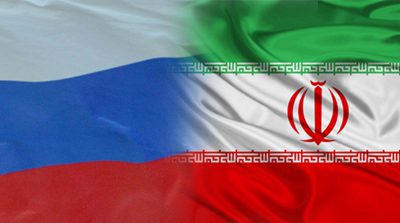In an illuminating article published by Kuwaiti newspaper Al-Jarida, a complex, multi-faceted deal in the intricate Syria-Iran-Hezbollah-Russia network is purportedly in the works, potentially escalating the already tense geopolitical climate in the region. The alleged four-way deal, as corroborated by trusted sources, has the potential to heighten threats against both Israel and Ukraine, countries already grappling with their respective security challenges.
If there’s merit to the claim, the arms movement could witness a strategic transfer of weapons from Hezbollah to Syrian regime-supported Arab tribes and further on to Moscow, a move that might appear paradoxical considering Hezbollah’s well-documented proclivity for stockpiling weaponry. Nonetheless, it is argued that such a manoeuvre might enable Hezbollah to offload older munitions while simultaneously acquiring newer, perhaps more advanced Iranian weaponry, thus not only maintaining but potentially upgrading its military capabilities.
This scenario is further complicated by the historical backdrop of arms movement through Syria to Hezbollah, a strategy that Iran has previously leveraged. The unfolding of the Syrian Civil War from 2011 onwards, with Hezbollah’s intervention on behalf of the regime – facilitated by Iranian support, including the deployment of IRGC troops – shifted the geopolitical dynamics slightly, embedding an objective of Iranian entrenchment within the broader framework.
Hezbollah managed not only to benefit from the situation but also firmly establish itself in strategic Syrian locations such as near Aleppo and the Golan. Iran reciprocally expanded its trading axis in Syria, maneuvering weaponry to crucial points like Albukamal, T-4 base, Damascus, and further across the Syrian expanse.
A vital aspect to explore in this convoluted situation is the Quds Force’s leadership, particularly its current leader, Ismail Qaani, who stepped into the role following the 2020 killing of his predecessor, Qasem Soleimani. Qaani, according to a source cited by Al-Jarida, agreed to facilitate the provision of new weapons to Hezbollah via Syria, receiving, in return, a significant portion of its older arms and ammunition to bolster the Arab tribes allied with Syria. These tribes pose a threat to the US-backed Syrian Democratic Forces (SDF) and are instrumental in expanding the regime’s sway, particularly in eastern Syria. A facet of this arrangement potentially enables Russia to acquire a portion of Hezbollah’s weapons, bolstering its military operations in the ongoing conflict in Ukraine.
On a parallel trajectory, the alleged deal may facilitate diplomatic and strategic maneuvering between Moscow, Turkey, and Syria. Turkey, having occupied northern Syria and supported Syrian rebels against the SDF, maintains a turbulent relationship with the latter, designating it a “terrorist” entity. As Ankara navigates discussions with Russia, the Syrian regime, and Iran, normalization between Turkey and Syria remains a complex and delicate process, hinging on nuanced demands and historical agreements like the Adana agreement of 1998. However, it appears that Turkey, Iran, and Russia collectively seek to avoid a direct confrontation with Washington, each due to its individual reasons, viewing the empowerment of Arab tribes as a strategically viable means to undermine the SDF without directly instigating conflict.
Moreover, Hezbollah Secretary-General Hassan Nasrallah, in dialogue with Qaani, reportedly expressed that confrontations with Israel have morphed into a new phase, centring upon the conflict over energy resources in the eastern Mediterranean. Thus, Hezbollah’s need for qualitative weaponry, capable of establishing a deterrent balance with Israel, becomes imperative.
This complex web of international relations and strategic deals indicates an elaborate, albeit precarious balance in which entities like Hezbollah stand to benefit, replenishing their weapon caches with more advanced technology, and thereby perpetuating a persistent threat to Israel. Simultaneously, Russia’s benefit from the arrangement is situated in the acquisition of additional arms—albeit how Moscow would navigate the transportation of the weaponry remains unclear. This arrangement, if brought to fruition, is indicative of a recalibration of power dynamics in the region, emphasizing the need for careful observation and strategic engagement from the international community to mitigate potential escalations and protect precarious stabilities.



















